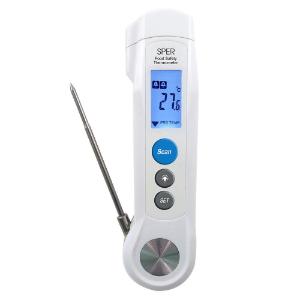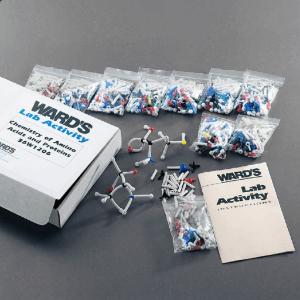Foiled Again: Science of Keeping Thanksgiving Leftovers Safe
All Grades
Firsts, seconds, and thirds. Despite your best efforts, your fridge is likely to be filled to the brim with Thanksgiving leftovers. But even the biggest meal of the year will leave you feeling hungry the next morning. So, before polishing off those leftovers, it's a good idea to check the U.S. Department of Agriculture's (USDA) Leftovers and Food Safety guidelines to ensure you enjoy them safely.
You can use food safety to engage students in inquiry-based science. For instance, in a previous post, Fowl Play, we discussed the science behind temperature's effect on bacteria in food. Students learned why heating poultry to at least 165°F destroys Salmonella, Campylobacter bacteria, and avian influenza viruses.
Before the food coma sets in, a timely discussion about the proper handling of Thanksgiving leftovers can expand students' understanding of food-science topics.
How to safely store leftovers
Now that the family chef has cooked the turkey and all the fixin's at the proper temperature and bellies and hearts are full, it's time to put away the leftovers.
After the feast, put leftovers in the refrigerator as quickly as possible. Refrigerate foods within two hours unless you're keeping them hot or cold.
Keep foods out of the "danger zone." This zone is a temperature where harmful bacteria can grow. Keep cold foods cold, below 40o F, and hot foods hot when serving, above 140o F. Foods that are particularly prone to bacteria growth have a low acid content, a lot of protein, and moisture (i.e., dairy, eggs, poultry, fish).2 So handle that Turducken with care; that’s a lot of protein!
Bacteria reproduce through binary fission (a single cell divides into two identical cells). Under optimal conditions (oxygen, nutrients, temperature), bacteria can grow and divide extremely rapidly.
Two hours is the maximum time perishable foods should be at room temperature.1 This includes the time they're on the table during your meal. Just ONE bacterium, doubling every 20 minutes, can grow to over 2,097,152 bacteria in 7 hours!2
Store foods in clean, food-grade containers. A large container or whole turkey will take too long to cool down to a safe temperature, which gives bacteria a chance to multiply. So, the USDA recommends dividing leftovers into smaller portions and refrigerating or freezing them in covered shallow containers.
When to throw leftovers out. Turkey and trimmings stay safe in the refrigerator for three to four days. So mark your calendar for the Monday after Thanksgiving to eat all those delicious leftovers. After that time, spoilage bacteria begin to take over (the bad taste and smell will be a dead giveaway). If you store leftovers in the freezer, they will stay tasty and safe for 2-6 months.
Make sure you reheat leftovers well.
When reheating leftovers, be sure they reach 165°F (high heat makes the bacteria’s cell collapse and die; read our Fowl Play post to learn more). Also, be sure to cover leftovers before reheating. This keeps the food moist and helps distribute the heat throughout the food.
Bring food to a rolling boil if you’re reheating on the stovetop (soups, sauces, and gravies). In the microwave: cover and rotate foods for even heating. Arrange food items evenly in the microwave, add some liquid if needed, and cover. Vent the lid or wrap to let the steam escape. The moist heat will help destroy harmful bacteria and will ensure everything cooks evenly.
When done, check the internal temperature of the food with a food thermometer before eating.
References: 1. USDA: Thanksgiving Leftovers for Safe Keeping, Weekend Grazing 2. UNL FOOD. Lumens: Boundless Microbiology, Bacterial Population Growth
Recommended products
[StartProductBlock]

Food Safety Thermometer with IR, Sper Scientific
HACCP compliant surface and internal temperature. The built-in bright white flashlight helps illuminate the surface being measured. Gives surface and internal temperature readings. Check the surface temperature of food instantly using infrared technology.
[EndProductBlock]
[StartProductBlock]
MyLab How Clean is our Home Environment
Single student kit ideal for remote learning solution; teach students about the ubiquity of bacteria right at home. Students can test the efficacy of household cleaners at killing bacteria and how cleaning affects microbial growth
[EndProductBlock]
[StartProductBlock]

Ward's® Chemistry of Amino Acids and Proteins Lab Activity
Illustrate the structure of a protein in three dimensions. Students form a polypeptide to learn about peptide bonds, protein structure, and protein synthesis and explore amino acids' general structure and composition.
[EndProductBlock]
